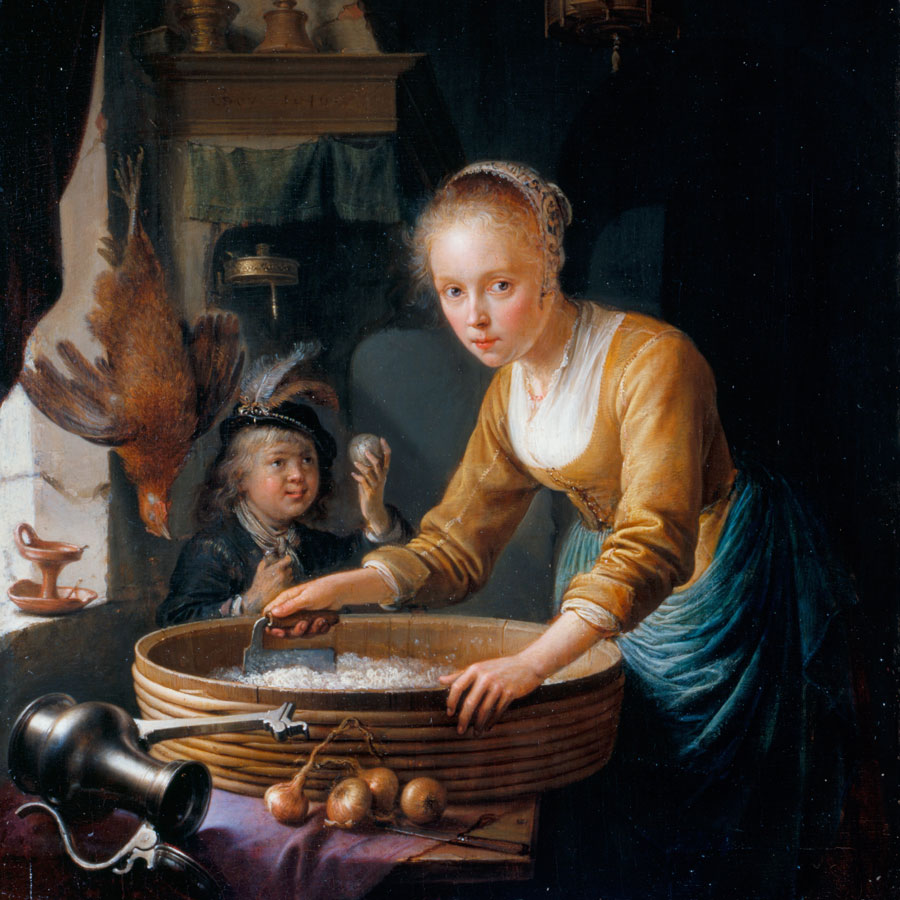Queen’s Gallery: Until 24th July
Dutch artists thrived in their depictions of the everyday, encompassing in their work both the breadth of sociability and commercial life, and the serenity of domestic tasks. Masters of the Everyday provides a fascinating testament of this very ideal, displaying not only a stunning collection of globally revered artwork, but a variety whose subject matter transcends time, class, and tone. From the monarchical studies of Hendrick Pot to the almost comical caricatures of the Ostade brothers, the Queen’s Gallery supplies enlightening insight into the beauty and diversity of the Dutch Golden Age.
The exhibition opens onto an area focusing on the early years of artistic Dutch pre-eminence, specifically the growing commission of artists from the Netherlands to paint English royal portraiture. While monarchy is not a particularly central motif within the following areas of the exhibition, a definitive sense of regality can be used to describe the gallery’s choice of artworks. Moreover, from the introductory paintings until the final oeuvres, a series of common themes clearly appear to unite all works, themes which have now come to be recognised as characteristic of Dutch art of the 17th and 18th centuries.
Most notably, the exploration of spatial interiors was central to the manner in which artists of the age documented the everyday. The significance of this notion is suitably drawn attention to by art critics used in the exhibition’s audio guide. Consequently, while the study and manipulation of space was important both in the rendering of a royal assignment, it was equally as significant in the capture of petit bourgeois marketplace life. Placed in a striking position at the gallery’s entrance, Terbrugghen’s ‘A Laughing Bravo with a Bass Viol and a Glass’ stands out as a centrepiece in its conveyance of the bustling movement of social bravado, and on a markedly grander scale than other painstakingly detailed smaller paintings. Not concerned with portraying a sense of laboriousness, this particular piece of the collection appears to revel in its imperfections, while juxtaposing the minutia of its contemporaries.
With reference to the dazzling intricacies of artists such as Gerrit Dou, lead proponent of the school of Leiden Fine Painters during the Golden Age, the presentation of light was another theme that highlighted the brilliance of Dutch renditions of the quotidian. While Adriaen van Ostade’s figures seem to glow in their coloured uniforms of Dutch peasantry, Maes’ ‘The Listening Housewife’ made an example out of masterful illuminations and depth alongside spatial decoration. As the titular housewife plays a satirical role in her eavesdropping, she makes direct eye contact with the viewer, and enhances the feeling that the observer is becoming accustomed to the painted characters, evoking both temporal differences and similarities.
In wonderful contrast, the rougher, more impressionistic style of De Hooch’s scenes are a personal favourite, coupled with his masterful expression of light and interior space while each figure is perfectly captured in a transitioning pose of everyday movement.
Perhaps most significantly, Masters of the Everyday gives profound insight into the lesser-known contemporaries of the greats, such as Vermeer and Rembrandt. And refreshingly so: the Queen’s Gallery makes a fantastic effort in educating the visitor.
Even to those not especially taken with art, the exhibition offers a captivating insight into the social history of Dutch living, both elite and peasant. It is doubtless to say that Dutch art prior to the last few centuries reigns as one of the most compelling and beautiful movements in history; such sentiments are here proved entirely accurate. Standing out as one of the most remarkable artistic offerings to visit Edinburgh in the past year, Masters of the Everyday deserves huge appraisal.
Image Credit: Gerit Dou

